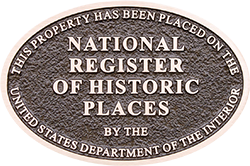The Homestead
Historical Information
 Obediah’s Okefenok began in 1989 after the restoration of the 127 year old cabin built by swamp legend, Henry Obediah Barber. Named Obediah’s Okefenok by the property owner, to simply imply that Obediah would have called his home “Okefenok” (‘ok fi’ nok) instead of “Okefenokee”, because swampers often left out extra syllables as they spoke the territorial slang.
Obediah’s Okefenok began in 1989 after the restoration of the 127 year old cabin built by swamp legend, Henry Obediah Barber. Named Obediah’s Okefenok by the property owner, to simply imply that Obediah would have called his home “Okefenok” (‘ok fi’ nok) instead of “Okefenokee”, because swampers often left out extra syllables as they spoke the territorial slang.
The log home is the oldest swamp settler’s home to remain in and around the swamp, constructed by the hands of a renowned farmer, hunter and explorer. Obediah lived on the northwestern rim of the Okefenokee, and was a larger-than-life character at 6½ feet tall. He served as guide for surveying parties exploring and mapping the swamp in 1857, 1875 and 1890. By the 1890’s his reputation and knowledge had made him a living legend. A centerpiece of this historical park now known as Obediah’s Okefenok, the cabin is located 7½ miles south from downtown Waycross, Georgia, on Swamp Road.
The Life – The Legend – The King
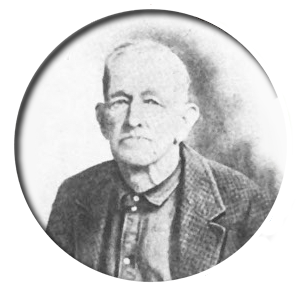 Henry “Obediah” Barber was born in Bryan County, Georgia on July 25, 1825. He was the son of Isaac and Frances Barber and a Grandson of Moses Barber. He married Nancy Stephens of Tattnall County, Georgia, and by 1854 the Barbers had two children. The young family moved to the northeastern edge of the Okefenokee Swamp north of Cowhouse Island on the Blackshear Road in 1854. They bought a 490 acre lot. Nine more children were born while he lived on this farm.
Henry “Obediah” Barber was born in Bryan County, Georgia on July 25, 1825. He was the son of Isaac and Frances Barber and a Grandson of Moses Barber. He married Nancy Stephens of Tattnall County, Georgia, and by 1854 the Barbers had two children. The young family moved to the northeastern edge of the Okefenokee Swamp north of Cowhouse Island on the Blackshear Road in 1854. They bought a 490 acre lot. Nine more children were born while he lived on this farm.
From 1857 until 1870, Barber served as a Justice of the Peace, the first in Ware County, and then in Pierce County when his district was made part of Pierce County in 1859.
He also served as a Private in the 24th Battalion, Georgia Calvary, during the Civil War. In 1862 his service was with Capt. T.S. Hopkin’s Company of Mounted Partisans Rangers (Mercer’s Partisans) at Camp Fort, Georgia.
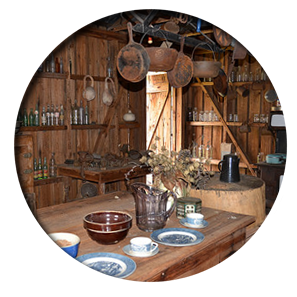 In 1870, he sold his farm, resigned his public office, and move with his family six miles across the prairies of the northern Okefenokee to a new farm (a 490-acre land lot) on the northwestern edge of the swamp in Ware County. Here he built a log home, a large herd of cattle and hogs, and a reputation as a brave bear hunter. At that time the location was about seven miles due south of the tiny village of Tebeauville on the Savannah and Gulf Railroad (S&G R/R). Just north of Tebeauville where the Brunswick and Western Railroad crossed paths with the S&G R/R, a new town was developing. The year was 1874, the town is now known as Waycross.
In 1870, he sold his farm, resigned his public office, and move with his family six miles across the prairies of the northern Okefenokee to a new farm (a 490-acre land lot) on the northwestern edge of the swamp in Ware County. Here he built a log home, a large herd of cattle and hogs, and a reputation as a brave bear hunter. At that time the location was about seven miles due south of the tiny village of Tebeauville on the Savannah and Gulf Railroad (S&G R/R). Just north of Tebeauville where the Brunswick and Western Railroad crossed paths with the S&G R/R, a new town was developing. The year was 1874, the town is now known as Waycross.
Barber’s first wife, Nancy, died in 1874. He then married Matilda Tatum in 1875. Between 1875 and 1893, they had nine children. Which now totaled 20. With approximately 40 years between the first and last child’s birthdate, Obediah became a father for the last time at age 66. By the 1880’s he was a prosperous country squire.
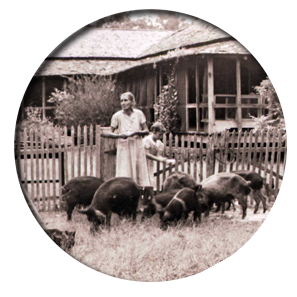 In 1880 Obediah owned 1,520 acres, three horses, and four working oxen. He reported 40 acres of improved land. He had owned 76 head of cattle, 150 hogs and 34 chickens. He devoted four acres of his farm to rice growing, producing 3,875 lbs. of rice in 1879. Corn was grown on 24 acres, four acres were devoted to oats, two acres to sugar cane, and sweet potatoes were grown on two acres. His bees produced 110 lbs. of honey and 12 lbs. of wax in 1879. He estimated that he sold $300.00 worth of farm products in 1879.
In 1880 Obediah owned 1,520 acres, three horses, and four working oxen. He reported 40 acres of improved land. He had owned 76 head of cattle, 150 hogs and 34 chickens. He devoted four acres of his farm to rice growing, producing 3,875 lbs. of rice in 1879. Corn was grown on 24 acres, four acres were devoted to oats, two acres to sugar cane, and sweet potatoes were grown on two acres. His bees produced 110 lbs. of honey and 12 lbs. of wax in 1879. He estimated that he sold $300.00 worth of farm products in 1879.
Matilda died in 1898. In December 1898, at the age of 73, Barber married for the third time, to 26 year old Martha Ann Kight. Barber suffered a stroke in 1903. A divorce was acquired in 1907. In 1908 Obediah was listed as a contestant in a Fiddling contest, held in Waycross. Barber’s health declined in 1907, during the next two years E.O. and J.I. Barber served as guardians. Barber died on December 28, 1909. Ironically, there was no obituary.
He was buried in Kettle Creek Cemetery, about 10 miles northwest of his home.
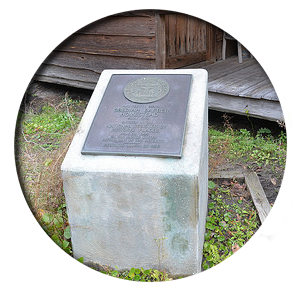 Although Obediah saw the beginning of the end of the wilderness and the frontier tradition in the Okefenokee Swamp, he was valued as a source of wit and wisdom. The great Swamp that Barber explored was designated as the Okefenokee National Wildlife Refuge and a Georgia State Forest, the largest in the state, and later as a National Natural Landmark, and a Wetland of International Importance.
Although Obediah saw the beginning of the end of the wilderness and the frontier tradition in the Okefenokee Swamp, he was valued as a source of wit and wisdom. The great Swamp that Barber explored was designated as the Okefenokee National Wildlife Refuge and a Georgia State Forest, the largest in the state, and later as a National Natural Landmark, and a Wetland of International Importance.
The Log Cabin of Obediah Barber is no architectural masterpiece. It is typical of log homes in and around the Okefenokee Swamp that were described and sometimes photographed by surveyors, writers, and scientists between 1875 and 1915. Because of its rustic character, the cabin was used for a movie set for the film “Swamp Girl” in the early 1970’s. Today, the house is the material core for a historical park that interprets life in and around the Okefenokee during the period 1850-1910.
This information and more is now on file with the United States Department of Interior, National Parks Service, and has listed the Obediah Barber Homestead on the National Register of Historic Places as of the date, June 20th, 1995. A bronze marker has been placed in front of the cabin to commemorate this listing. Placed, March 23, 1996.
